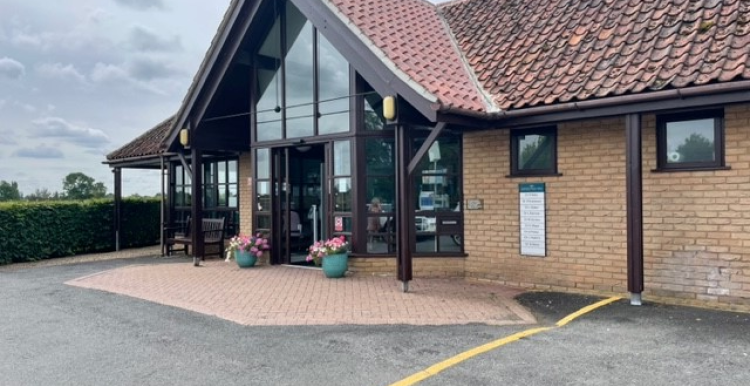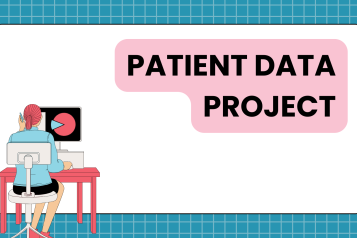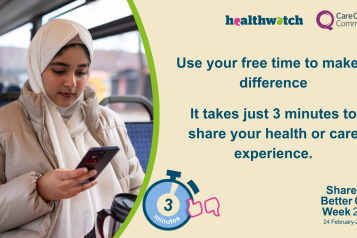GP Practices Working Well

In February’s Peterborough Health and Care Forum, improving the accessibility of GP appointments was a key area of discussion, with a member of the public highlighting their positive experiences at Wansford Surgery.
We spoke to Annette Johnson, Deputy Practice Manager at Wansford Health Campus to understand what makes their appointment system work well for patients and how they ensure they can meet the needs of patients:
“Our appointment system was born out of COVID; we looked at what worked and what could be improved and went from there. This is something we’ve always committed to as a practice – changing what we need to so we can continuously improve.
“Prior to COVID, we ran an emergency system (also known as a triage system) with paramedics screening the calls and putting patients who needed on the day appointments into our booking system. The team would average 90 contacts a day, which although did not equate to 90 on the day appointments, the number understandably put a lot of pressure on the on-call/duty doctor who was working in isolation.”
Meeting patients' needs
Annette explains that this system was not a sustainable way to continue, and post COVID it was decided to make a change to ensure the practice could continue to meet patients’ needs.
“This is when our hub was created. This is a dedicated room with desks for two paramedics and a GP; they work as a team together rather than being isolated as they were before.”
The hub, also known as triage and the emergency room, has become integral to improving patient experience. Annette explains how it works:
“A patient will call in wishing to see a doctor today. Our team in reception are trained to screen and signpost, which can include referring a patient to the hub team. We have a Red, Amber, Green (RAG) list which our receptionists use to determine if a patient needs an on the day appointment (red is deemed an urgent issue, with amber and green being less urgent but still needing attention on the day); on-going training is given for this to ensure our receptionists build their confidence and experience, and the RAG list is regularly reviewed and updated. Importantly, our receptionists can go into the hub to speak to the team if they need further guidance.
“If a patient is referred to the hub, then the paramedics or GP will conduct a phone appointment in the first instance. This call may result in a face-to-face appointment on the same day. This will be the case where a physical examination is necessary e.g. to listen to a chest, feel the tummy etc, and especially for babies, children and the elderly."
Positive impacts for mental health
Annette explains that the hub has positive impacts for both patient experience and the practice team, including their mental health:
“The hub is really important – our GPs and paramedics don’t feel isolated; they can discuss cases as a team. The team work also ensures for continuity for the patient.”
Communicating Pharmacy First
Annette explains that another critical area for improving patient experience is ensuring for clear communication with patients about Pharmacy First. This has meant that some patients have been able to see a pharmacist instead, which in turn frees up the surgery for those who do need to see a GP, having positive implications for reducing stress and anxiety in getting an appointment.
“Signposting is key. We have recorded the seven areas your pharmacy can help with on our phone system so patients can quickly and easily find the information they need. This has directed a lot of patients away from the GP practice as their local pharmacy has been able to help instead. For example, pharmacists can prescribe antibiotics. Education of Pharmacy First is key.”
Aside from calling the surgery, as with other GP practices, appointments can be requested online for both urgent and routine appointments, and consultations where appropriate can also take place online. It’s the hub system, though, that the team feels is at the heart of ensuring patients can access help efficiently.
“We feel that the hub team is quite unique – everyone sitting in the same room, working as a team, sharing the workload. The GPs and paramedics feel less pressured and more supported, and they take it in turns to be in the hub. They still have the capacity to ask the patients to come in if they need to see them face to face, so it becomes a one stop shop for the patient.
“The hub is largely for minor, acute illnesses. However, if the GP in the hub gets called away, the paramedics can keep it running.”
“The hub a positive environment for our learners too; they all get a turn in the hub and this is great place for training. They experience the unpredictable nature of the GP practice and learn to work at a different pace, with excellent support from the team there. It’s also an important way for trainees to learn about what else is going on in the GP practice and how our workflows all work together.”
“Creating the hub really was born overnight – we located a room, moved in the desks and IT, and organised the space. Within a few weeks we had the RAG list created. We’re pleased with how it’s positively impacting both patient and staff experience and hope that other GP practices can learn from us.”
Wansford Health Campus includes Wansford Surgery and Kings Cliffe Practice. The health campus welcomes other GP teams to get in touch if they’d like to find out more about the hub: Contact - Wansford Surgery & Kings Cliffe Practice.
Interested in joining our Health and Care Forums?

